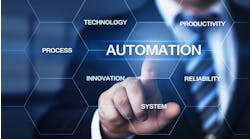If you’re looking for one word that explains the rapidly accelerating attention around the Industrial Internet of Things (IIoT), that word is “cost:” specifically, the falling costs of sensors, data storage and connectivity that are putting advanced distributed systems within reach of a much wider range of enterprises. Combine these falling costs with massive investment in R&D and M&A by mega-vendors in IT and OT all looking to dominate industry’s next evolution, and the answer to the question, “why now?” can be answered simply by applying the first rule of investigation: Follow the money.
“Real-time distributed systems are not new,” Steve Jennis, senior vice president for corporate development for PrismTech, said in October during the Smart Industry 2015 conference in Chicago. “We’ve been building air-traffic management systems, military combat systems and advanced manufacturing systems for decades; but they’ve been very, very expensive. Only governments or very large corporations could afford them. What’s changing is the cost profile for building these high-performance distributed systems. What was a multi-million dollar system is becoming a multi-thousand dollar system: We can connect the enterprise end-to-end for a reasonable cost for the first time ever. That’s what’s making the difference.”
[callToAction]
For end users, lower costs mean lower risk and more attainable ROI. Attainable ROI means investments are easier to make. But while money may be driving the conceptualization of the IIoT, its success will depend upon the pull-through of end users actually implementing systems that require not just hard costs but the added risks of structural and organizational change.
It’s true that the cost of Internet-connected sensors has fallen 50% in the past decade; Internet connectivity is close to ubiquitous; and smart-device adoption is so high it is fostering a BYOD (bring-your-own-device) business environment. But for all of the trends driving adoption of smart industry, navigating the convergence of OT and IT remains a challenge that will require cooperation, vision and alignment not just from the top floor to the shop floor, but among long siloed business and engineering units and even competing vendors. IT and OT live in very different worlds, Jennis said: with different cultures, priorities and values. Where IT is generalized, standardized and people-focused, OT is highly specialized, asset-focused, precise and prioritized toward safety and efficiency. Security, interoperability and accepted standards are the key to smoothing the divide.
“From a technology standpoint, systems must be adopted that enable data connectivity on demand in real time across different environments to provide a global data space that can be utilized to give people what they need to do their job.”
To smooth this transition, there are software agents that you can deploy on any device from a cloud service to an edge device, a sensor, a mobile phone to create a data space. There are also new concepts that are becoming common—federated clouds, distributed clouds—that are allowing a lot more data to go to the cloud. Distributed systems are the way to think about these developments.
“Leading thinkers have looked at cost savings available in terms of productivity, new business models and environmental benefits compared to the cost of implementing these systems and they’ve determined that this is the direction they want to go,” Jennis said. “They’ve put their money where their mouth is in terms of restructuring themselves along those lines.”

